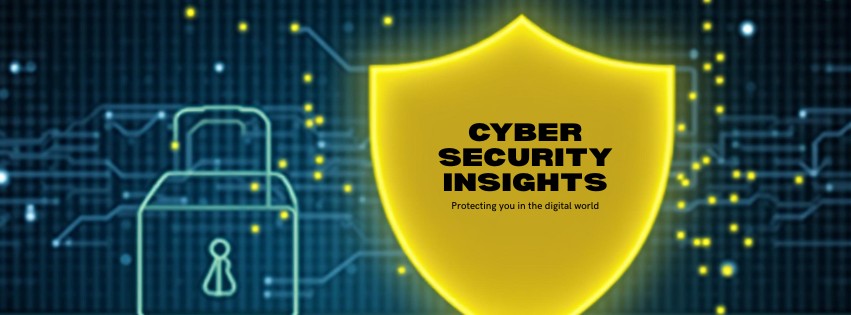
Hackers Abused GitHub to Spread Malware Mimic as VPN
`
Unmasking the GitHub Threat: When Virtual Private Networks Become Real Public Peril
In an age where digital privacy is paramount, Virtual Private Networks (VPNs) have become a cornerstone of secure internet browsing. They promise anonymity, data encryption, and the ability to bypass geo-restrictions. However, a disconcerting trend has emerged that weaponizes this very trust. Recent reports highlight how threat actors are cunningly leveraging platforms like GitHub to distribute malware, masquerading as legitimate VPN clients. This isn’t just about a breach; it’s about a betrayal of trust in critical security tools.
Unveiling the Deception: How GitHub Became a Malware Playground
GitHub, a ubiquitous platform for developers worldwide, is celebrated for its collaborative nature and open-source contributions. It’s an unlikely theatre for malware distribution, which is precisely why it’s been so effective for attackers. The sheer volume of legitimate code and projects provides ample camouflage for malicious actors.
The Grand Scheme: Mimicking Legitimate VPNs
Attackers aren’t crude in their methods. They’re deploying sophisticated social engineering tactics. Instead of creating overtly suspicious files, they craft seemingly authentic VPN client installers. These fake installers often bear the branding and user interfaces of popular VPN services, making them virtually indistinguishable from the real thing at first glance.
- Sophisticated Impersonation: The fake VPN clients are meticulously designed to mimic the legitimate software, often even replicating the user interface and basic functionalities to lull users into a false sense of security.
- Leveraging GitHub’s Legitimacy: By hosting these malicious files on GitHub, attackers exploit the platform’s reputation. Users, accustomed to finding trusted open-source projects on GitHub, are less likely to suspect a download originating from it.
- Distribution Channels: These malicious GitHub repositories are then promoted through various channels – phishing emails, compromised forums, social media, and even malicious advertisements, all designed to direct unsuspecting users to the download link.
Malware Payloads: What Lies Beneath the VPN Facade
Once the fake VPN client is executed, the true nature of the download is revealed. The malware payload can vary widely, but common threats include information stealers, remote access Trojans (RATs), and even ransomware.
- Information Stealers: These insidious programs are designed to pilfer sensitive data, including login credentials, financial information, cryptocurrency wallet keys, and personal documents. The threat actors often target browser saved passwords and cookies.
- Remote Access Trojans (RATs): RATs grant attackers unauthorized remote control over the compromised system. This allows them to monitor activities, manipulate files, record keystrokes, and even activate webcams and microphones, leading to severe privacy violations.
- Ransomware: In some cases, the payload could be ransomware, encrypting the victim’s files and demanding a ransom for their release. This can be devastating for individuals and businesses alike.
The Human Element: Why We Fall for It
The success of these attacks hinges on human vulnerability. The desire for security and privacy, coupled with a lack of awareness about sophisticated phishing techniques, makes users susceptible. The attackers leverage urgency, attractive offers, or simply the appearance of legitimacy to trick users into downloading their malicious software.
- Trust in Familiar Platforms: Users inherently trust platforms like GitHub, making them less critical of downloads encountered there.
- Urgency and Limited-Time Offers: Phishing campaigns often create a sense of urgency or offer enticing deals for VPN services, compelling users to act quickly without due diligence.
- Lack of Technical Savvy: Not all users possess the technical acumen to discern legitimate software from sophisticated impersonations, especially when the visual cues are convincing.
Remediation and Prevention: Fortifying Your Digital Defenses
Protecting yourself from such sophisticated scams requires a multi-layered approach, combining technological safeguards with heightened user awareness.
Immediate Actions if Compromised:
- Disconnect from Network: Immediately disconnect the compromised device from the internet to prevent further data exfiltration or spread of malware.
- Isolate and Scan: Isolate the device and perform a thorough scan with a reputable antivirus/anti-malware solution. Ensure the security software is up-to-date.
- Change Passwords: Change all critical passwords, especially those for banking, email, and social media, from an uncompromised device. Enable Multi-Factor Authentication (MFA) wherever possible.
- Backup and Reinstall: For severe infections, the safest approach might be to back up essential data (after scanning for malware) and perform a clean reinstallation of the operating system.
- Report the Incident: Report the incident to relevant authorities (e.g., national cybersecurity centers, law enforcement) and the platform where the malicious software was hosted (e.g., GitHub).
Proactive Prevention Strategies:
- Verify Download Sources: Always download VPN clients and other software directly from the official website of the provider. Never trust links from third-party sites, emails, or pop-up ads.
- Exercise Caution with GitHub Repositories: While GitHub is generally safe, be extremely cautious when downloading executable files from lesser-known or recently created repositories. Look for signs of legitimacy, such as a long history of contributions, active community, and official links from the software vendor.
- Use Reputable Security Software: Implement and maintain a robust antivirus and anti-malware solution with real-time protection. Keep it updated.
- Enable Multi-Factor Authentication (MFA): MFA adds an extra layer of security to your accounts, making it significantly harder for attackers to gain unauthorized access even if they steal your password.
- Educate Yourself and Others: Stay informed about the latest phishing techniques and cybersecurity threats. Share this knowledge with friends and family.
- Regular Backups: Regularly back up your important data to an external drive or cloud service. This can mitigate the impact of ransomware or data loss.
- Network Segmentation (for businesses): Implement network segmentation to limit the lateral movement of malware within your network if a system gets compromised.
Relevant CVEs and GitHub Actions:
While the core issue here isn’t a specific vulnerability in GitHub itself but rather its misuse, it’s worth noting how existing vulnerabilities or misconfigurations can be exploited. For instance, if an attacker exploited a legitimate GitHub account via compromised credentials (which could happen through phishing independent of GitHub’s security), that account could then be used for malicious purposes. More generally, vulnerabilities related to supply chain attacks often involve abusing legitimate platforms.
- There isn’t a single CVE directly tied to “GitHub allowing malware via VPN mimicry” as this is a social engineering and abuse issue. However, the underlying methods of exploiting users often involve leveraging other vulnerabilities or weaknesses. For example, if the malware exploits a known vulnerability in an operating system or software, that would be associated with a specific CVE. For instance, a common tactic is to package malware that exploits CVE-2017-0199 (Microsoft Office/WordPad Remote Code Execution) or other common RCE vulnerabilities.
- GitHub’s GitHub Actions, while powerful, also need careful configuration to prevent misuse. Malicious actors could theoretically leverage compromised repository credentials to inject malicious workflows that compile and distribute malware, although this is a more advanced technique.
Tools to Bolster Your Cybersecurity Posture
Equipping yourself with the right tools is crucial in the fight against online threats. Here’s a table of useful categories and examples:
| Category | Recommended Tool Types | Example Tools | Key Benefit |
|---|---|---|---|
| Endpoint Protection | Antivirus/Anti-Malware, EDR Solutions | Malwarebytes, Bitdefender, CrowdStrike Falcon Prevent | Real-time threat detection, removal, and forensics. |
| Password Management | Password Managers | LastPass, 1Password, Bitwarden | Securely store and generate strong, unique passwords. |
| Network Security | Firewalls, DNS Filtering (for businesses) | pfSense, Zscaler, Cloudflare DNS | Block malicious traffic and filter suspicious domains. |
| Vulnerability Management | Vulnerability Scanners (for businesses/devs) | Nessus, OpenVAS | Identify and remediate software vulnerabilities. |
| Incident Response (IR) Tools | Digital Forensics Tools | Autopsy, Volatility Framework | Analyze compromised systems to identify breach extent. |
| Cloud Security Posture Management (CSPM) | CSPM Solutions (for businesses) | Aqua Security, Palo Alto Networks Prisma Cloud | Identify misconfigurations in cloud environments (like GitHub). |
Key Takeaways: Staying Ahead of the Curve
The incident of hackers abusing GitHub to spread malware disguised as VPNs serves as a stark reminder that cyber threats are constantly evolving and becoming more sophisticated. The digital landscape is a battleground where vigilance is your strongest shield.
- Verify, Verify, Verify: Always double-check the source of any software you download, especially security-sensitive applications like VPNs. Stick to official vendor websites.
- Trust, But Verify with Technology: While we trust platforms like GitHub, that trust shouldn’t blind us. Employ robust security software and keep it updated.
- Human Awareness is Key: No amount of technology can compensate for a lack of user awareness. Understanding social engineering tactics is paramount.
- Proactive Security is Essential: Don’t wait for a breach to happen. Implement strong passwords, MFA, regular backups, and stay informed about emerging threats.
In the interconnected world, our digital safety is a shared responsibility. By being informed, cautious, and proactive, we can collectively build a more resilient online environment and deny threat actors their ill-gotten gains.
““





